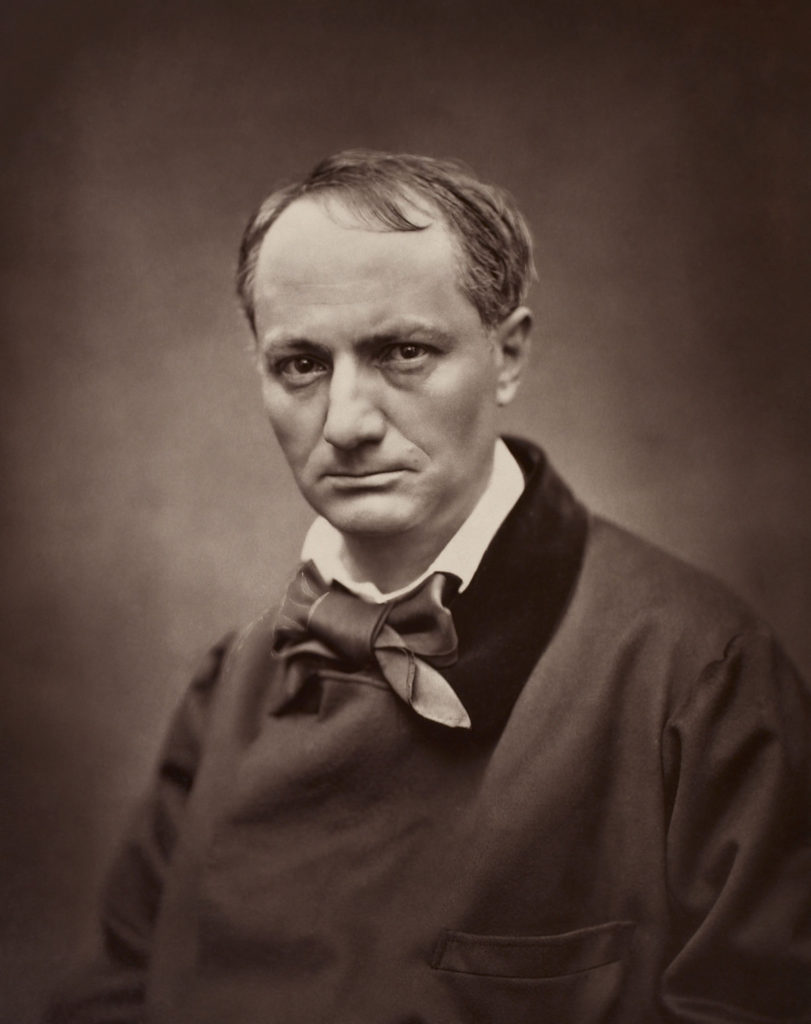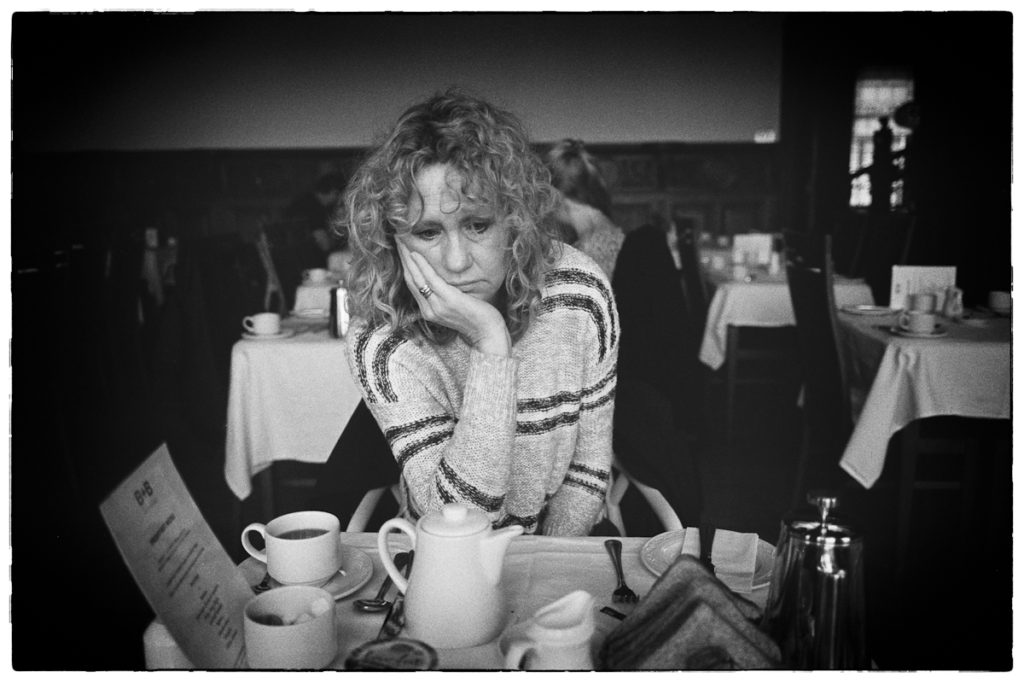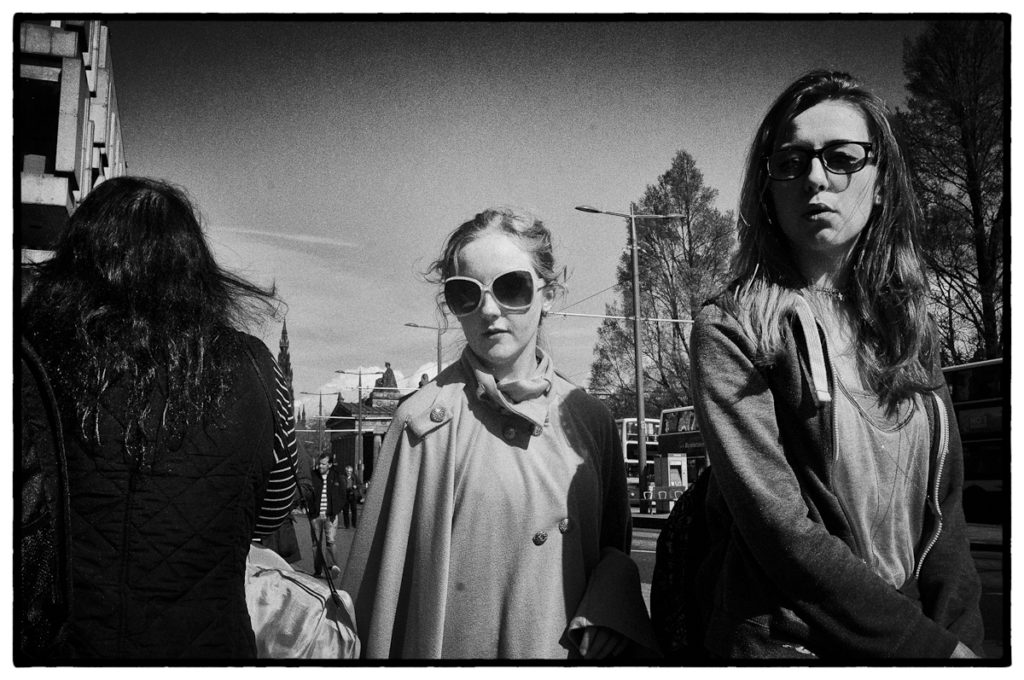Charles Pierre Baudelaire (1821 – 1867) was a French poet, essayist, art critic, and translator of Edgar Allan Poe. He’s best known for Les Fleurs du mal (The Flowers of Evil), an extended Modernist prose poem about where one might find beauty in modern, rapidly industrializing mid-19th-Century Paris. Baudelaire influenced a whole generation of Fench poets including Paul Verlaine, Arthur Rimbaud, and Stéphane Mallarmé, among others, and also 20th-Century artists as diverse as 60’s rock star Jim Morrison and Portuguese author Fernando Pessoa. He coined the term “modernité” to designate the fleeting, ephemeral experience of urban life and claimed that the primary responsibility of modern art was to capture and, in so doing, transform that experience.
While Baudelaire lay on his deathbed, dying of syphilis, his mother found two photographs of him he had secreted in his overcoat; apparently, he’d been keeping the two photos on his person, a hidden, guilty pleasure of some sort. In one (that’s it above), he stares aggressively at the camera as if trying to directly meet the unmediated gaze of the ultimate viewer of the photo. Frankly, he looks pissed off, as if the camera itself were his enemy, something put between him and viewer, something that obscured the potential of a meaningful relationship between him and the person who’d view him as the subject of the photo.
Baudelaire had been interested in photography since the 1850s. French photographer Nadar, (Gaspard-Félix Tournachon (1820 – 1910), was one of Baudelaire’s closest friends until Baudelaire’s death in 1867 (Nadar wrote Baudelaire’s obituary in Le Figaro). Nadar remains one of the great early photo-portraitists, his portraits held by many of the great national photography collections.
In spite of his interest in photography and his friendship with Nadar, Baudelaire never much liked photography as a means of getting at anything subjectively truthful. He thought the camera’s lens “a dictatorship of opinion,” a device that made an end-run around the active self-questioning required of a viewing subject. Photography could not, according to Baudelaire, encroach upon “the domain of the impalpable and the imaginary”; it was competent only as a means to document objective facts.
According to Baudelaire, only with an “embodied vision”, actively interrogating what one looked at, could you possibly gain any sense of mastery over the perceived object, and such active interrogation only became possible when the subject of one’s gaze could gaze back. Real subjective visual truth came only when there could be a reciprocal interaction of the viewer and the subject. Rather than the one-sided transaction implicit in much of Western visual art – painting or photography – Baudelaire’s idea of a truthful visual representation would be a “forest of symbols” that looked back at you “with familiar eyes.” Using this criterion, photographic portraiture was, at best, caricature.
*************
In secular Western culture, where science and rationality are presumed to give us insight into what is “true,” we are used to seeing the material world through the lens of science, where subjects are turned into objects and placed in categories. Photography aides that process by its ability to document objective facts, and Baudelaire saw that as a legitimate use of photography. For Baudelaire, the problem came with photography’s attempt to capture the subjective. It can’t, because it can’t look back. There’s no real interaction between the viewing subject and photographic subject. Relationship, that which underlies subjectivity, is impossible in the one-sided encounter offered by a photograph. The image will always be distorted.
Compare what happens when you look at a photograph of a woman, how you look at it, with the way you look at that same woman encountered in the flesh, on the street; how you do so determines whether or not you let her look back. “Truth” is found in the reciprocal gaze, between subject and object, between the man and woman walking past each other in the street.
Baudelaire would say that modern man suffers from a distorted visual culture created by the ubiquity of photographic images. Given the extent to which photography has been normalized and now embedded in our societal consciousness, it has led us away from the truth. It has distorted our ability to understand others. It gives us only a superficial caricature, a false representation of other people, visual images of persona as opposed to the person themselves. Capitalist consumerism uses its distortions to make us want things, playing on our imagination because the image can’t interact with us. We see other people in this “post-truth” world, where photographed people are real only to the extent they conform to our imaginations. The image world it gives us is of strangers-as-passersby who never make eye contact. It’s hard to see, really see, someone else in this world of images, surrounded by people who are all doing the same.



